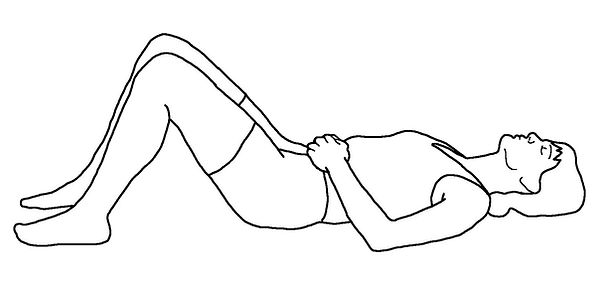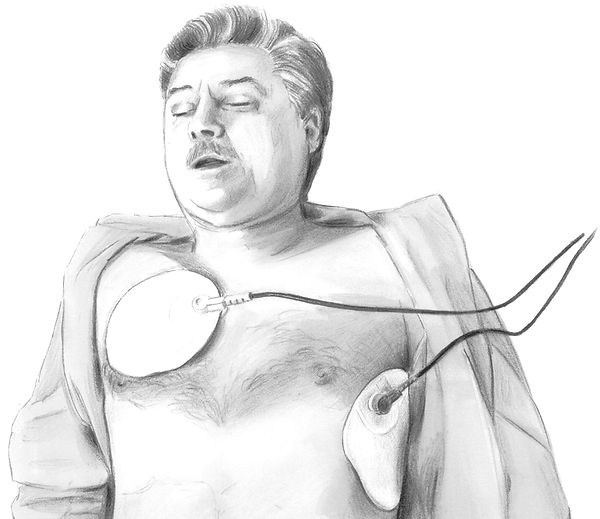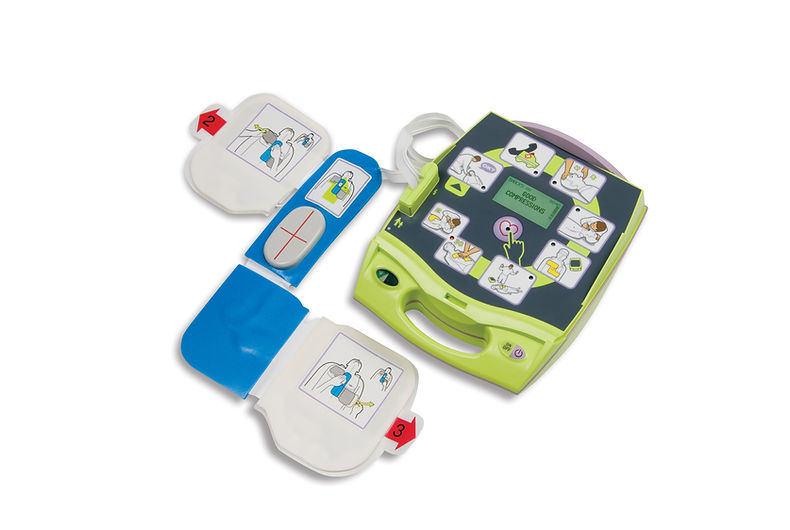ADMINISTERING AN A.E.D. TO A CARDIAC ARREST PATIENT
***WARNING*** This Instructable is not a replacement for actual hands-on training from a certified instructor. There are many organizations in the community that give C.P.R. and A.E.D. training. This usually comes at no cost to the person seeking the training as well. If in a dire emergency in which no one is present that has been certified through one of these C.P.R. training agencies, this set of instructions can still be referred to as simply a guideline. Of course, in all medical emergencies, 911 must be contacted first. There you will be connected to a trained individual that will walk you through the steps to administer high quality C.P.R. to the patient, establish the use of the A.E.D., and notify emergency personnel to respond to your location.
SITUATION: You encounter a person that is lying on the ground and appears to be unconscious. Immediately you check the area for hazards that could be harmful to yourself and then you approach the patient. Your most important step is to notify someone to call 911 and retrieve an A.E.D. (Automatic External Defibrillator). You look for any signs of breathing, listen for any breath coming from the nose or the mouth, and feel for any air escaping that region as well. Also, you try to wake the person to see if they are indeed unconscious or merely sleeping. Finally, you check the patient for a pulse. You determine the person has no pulse and immediately start chest compressions(Cardiopulmonary Resuscitations - C.P.R.). You know not to administer breaths yet due to possible exposure of yourself to the patient's hazardous bodily fluids. You know there is a facemask in the A.E.D. bag that is enroute. And look, it has just arrived along with the confirmation that 911 has been contacted. This is where our instructions begins.

NOTE: These instructions will be for an adult male or female. There are separate methods for infants, toddlers, and children. Consult the A.E.D. if you have such a patient. Usually the differences between adults and children are in the placement locations of the shock pads. Each brand of A.E.D. will possibly have slightly different steps to follow than these listed below. Take note of this as you are opening the case of the machine. Voice prompts could also vary slightly from these instructions. Listen to the voice prompts very closely, and, if possible, have a partner help you in the process as well.
-
Open the case and remove the A.E.D. machine along with the facemask and the shock pads. Continuous C.P.R. should be maintained throughout the entire setup process. Having the facemask available now will allow you to administer breaths along with chest compressions. One person should setup the machine while the other continues C.P.R. Preferably, the person that is most knowledgeable in the use of an A.E.D. should be setting it up. If both partners are not familiar in the A.E.D's use, the partner that brought the A.E.D. bag should switch out with the partner giving chest compressions to allow that person to rest.
-
Turn on the A.E.D. machine.
-
Remove the patient's shirt to expose the chest. If the patient is female, removing the bra is advisable since the underwire of the bra could affect the shock negatively. If possible, and to speed up the process, cut the bra away.
-
Place the pads on the patient's chest according to the picture on the shock pad. One pad should go above the right breast towards the outer part of the chest. If there is a scar in the this area, a pacemaker could possibly be in the patient. If this is the case, move the shock pad farther towards outside of the chest so it does not cover the pacemaker. The second pad should be placed below the left breast on the side of the chest (See attached picture).

-
Attach the cable(s) to the machine.
-
Stop C.P.R. to allow the machine to analyze the heart rate and advise if a shock needs to be administered(The A.E.D. will be promoting you the whole time. It is important to stop when the machine says to stop because if chest compressions are continued, the machine will think the heart is beating and not administer a shock)
-
Allow A.E.D. to analyze the heart and determine if a shock is needed. If the A.E.D. determines that a shock is required, restart C.P.R. until the machine is ready to deliver the shock.
-
Wait for prompt that shock is ready for delivery.
-
Clear the patient of all personnel. This is very important because the shock delivered to the unconscious patient to restart their heart will cause the heart to stop of a person touching the patient.
-
Press the shock button to deliver the shock.
-
Immediately after the shock is delivered, restart C.P.R.
-
Check for a pulse.
-
The A.E.D. will go through the process again after a certain amount of time. Do not forget to stop C.P.R. while the A.E.D. is analyzing the patient.
-
Switch roles between the providers that are giving C.P.R. to allow each person to rest. If possible, ask if other people on scene can help with chest compressions.
-
Continue to administer C.P.R. along with following the A.E.D. prompts until qualified rescuers arrive.
-
Try to remember how many times a shock was delivered so you can give this information to the responders for their knowledge in the treatment of the patient.



An A.E.D. storage cabinet found in public areas. It is always a smart idea to get to know where these are located at the places you frequent the most.
A common A.E.D. Inside you will find the facemask to give breaths, the shock pads, and the A.E.D. machine.
This is an A.E.D. completely setup. Notice the pictorial instructions for ease of use. Also, this machine has the ability to tell the provider if the C.P.R. is giving adequate chest compressions. The red cross is where the compressions are usually performed after the pads have been applied to the patient.